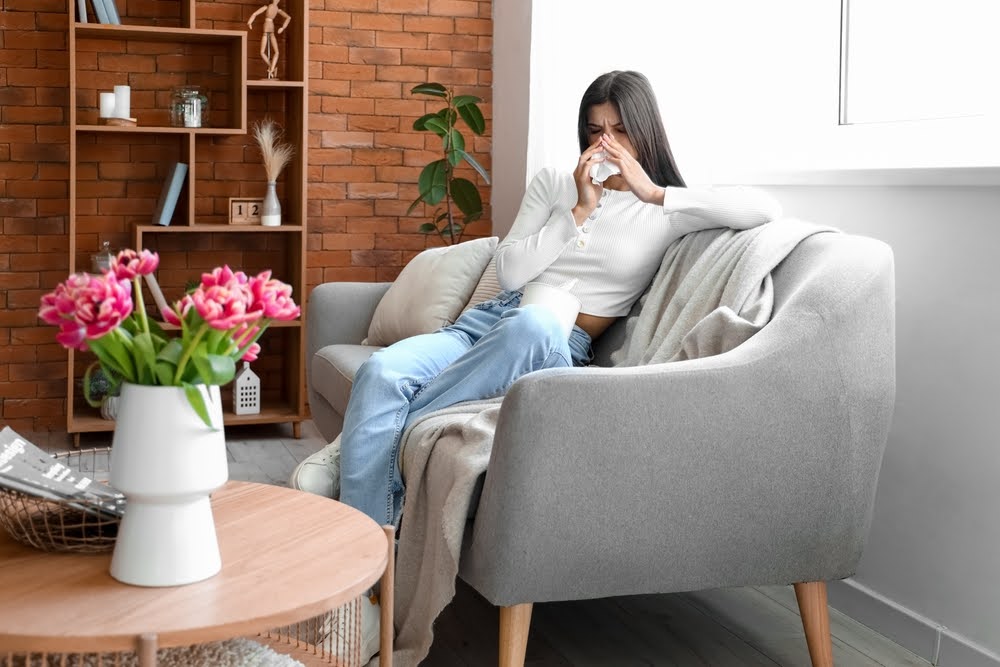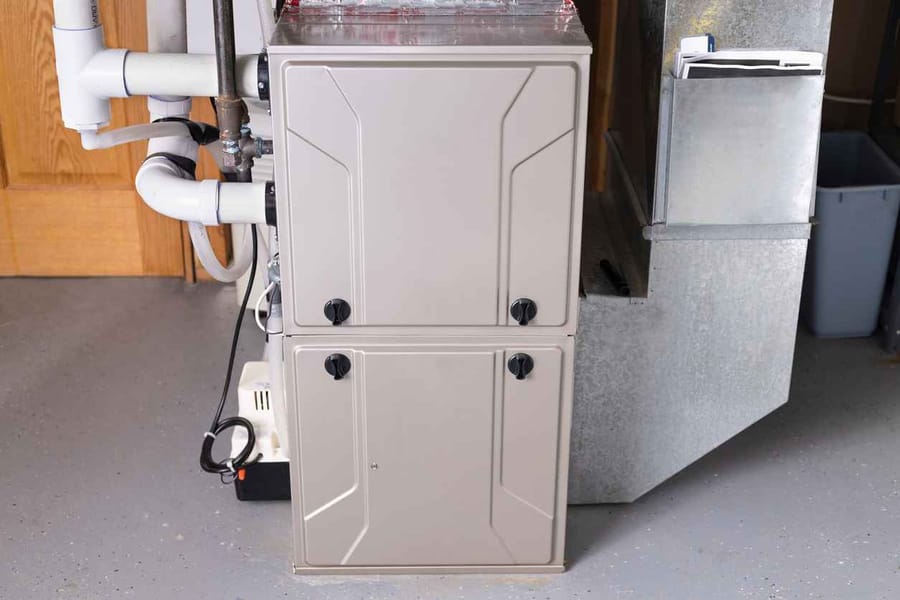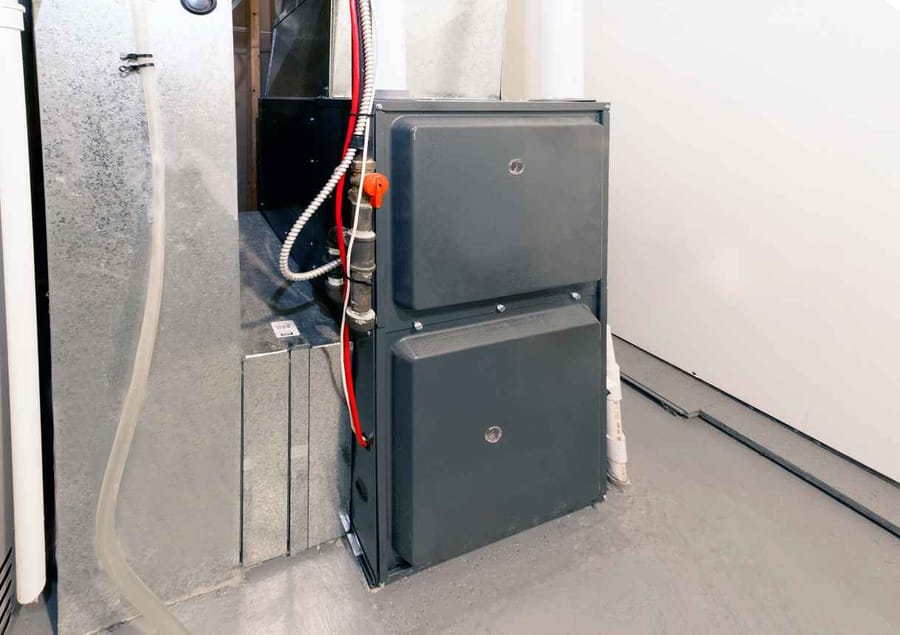5.0 Rated on Google
Common Indoor Allergens & Pollutants: Tips to Improve IAQ!

When you think about home, you probably picture a cozy, safe space — somewhere you can kick back, relax, and breathe easy. Unfortunately, we have some bad news: the air inside your home might not be as pure as it seems. Invisible contaminants like allergens, pollutants, and gases love to linger indoors, making things tough for people dealing with asthma, allergies, and other respiratory conditions. The good news is that you can improve indoor air quality (IAQ), making home life feel fresher and healthier, without having to overhaul your entire HVAC system.
Stay Cool Climate Control is here to walk you through what could be floating around your home and what you can do about it. As a trusted provider of heating, cooling, and indoor air quality services in Eastern Missouri, we have the solutions to help make your home a better place to breathe. This includes air quality testing, air filtration, humidifier installation, and more.
Give us a call, and let our team safeguard your family’s well-being!
What Is Indoor Air Quality (IAQ)?
So, what exactly is indoor air quality, or IAQ? Simply put, IAQ refers to the condition of the air within buildings and structures, especially relating to the health and comfort of the occupants. Good IAQ means the air is relatively free of pollutants, allergens, and other contaminants that could cause discomfort or negative health effects.
Poor IAQ, conversely, means there are higher concentrations of these unwanted guests floating around. This can lead to everything from a stuffy feeling in a room to more noticeable issues like allergy flare-ups or respiratory irritation. Think of it like the difference between a clear, sparkling glass of water and one that looks a bit cloudy — you definitely prefer the clear one for drinking, right? The same idea applies to the air you breathe constantly inside your house.
Common Indoor Allergens
Homes often collect tiny invaders that disrupt breathing and trigger allergy symptoms. Some drift inside through open windows, some hitch a ride on clothes or pets, and some grow quietly behind walls or under floors. Knowing what you’re up against helps when making a plan to breathe easier.
Dust and Dust Mites
Dust looks harmless enough. It floats through sunbeams and settles on shelves, but it hides some less-friendly surprises. House dust mites, microscopic creatures that feed on dead skin cells, thrive inside the layers of dust. Their waste triggers allergy and asthma flare-ups for many people. Regular cleaning helps, but even the tidiest homes struggle with house dust mite buildup over time.
Pet Dander
We love our furry friends; we really do. They bring so much joy! They also bring dander into our homes. Dander isn’t pet hair itself but tiny flecks of skin shed by animals with fur or feathers. These microscopic particles can become airborne and linger for a long time. Cat dander is notoriously sticky and small, easily spreading throughout a house and even into places where the cat doesn’t go. Dog dander and dander of other pets like birds or rodents can also cause reactions.
For people with pet allergies, exposure can lead to sneezing, itchy eyes, runny nose, and, sometimes, more severe reactions like difficulty breathing, especially for those with asthma. Even if you don’t have pets, dander can be carried into your home on the clothing of visitors.
Mold and Mildew
Mold and mildew are types of fungi that reproduce spores, which travel through the air. When these spores land on damp surfaces, they can start growing. That musty smell you sometimes notice in basements or bathrooms? Often, that’s mold or mildew making itself known. They thrive in areas with high humidity or where water damage has occurred — think leaky roofs, damp basements, steamy bathrooms, or even condensation around windows. Faulty plumbing can also create hidden moisture problems that are perfect for mold growth.
Exposure to mold spores can trigger allergy symptoms, irritate the eyes, nose, and throat, and potentially worsen asthma. Some molds produce mycotoxins, which can pose additional health risks with prolonged exposure. Controlling moisture is the biggest step in preventing mold growth.
Pollen
You probably associate pollen with springtime sniffles experienced outdoors. However, this powdery substance plants release can easily find its way inside your home. It hitches rides on your clothes, shoes, hair, and pets. It can also blow in through open windows and doors. Once inside, pollen can settle into carpets, furniture, and bedding. For individuals with seasonal allergies (hay fever), indoor pollen can mean symptoms persist even when they’re trying to escape the outdoor air pollution.
Volatile Organic Compounds (VOCs)
This one sounds a bit sciencey, but Volatile Organic Compound (VOC) sources are incredibly common indoors. VOCs are gases emitted by certain solids or liquids. Think paints, varnishes, cleaning supplies, disinfectants, pesticides, building materials, furniture (especially pressed wood products), air fresheners, cosmetics, and even craft supplies.
Short-term exposure to high levels of VOCs causes eye, nose, and throat irritation, headaches, dizziness, and nausea. Long-term exposure is linked to liver and kidney damage, central nervous system problems, and cancer. The scariest part? Many VOCs remain undetectable without special equipment because they lack odor or visible signs.
While distinct from other VOCs, gases like carbon dioxide (which we exhale and can build up in poorly ventilated spaces) and the dangerous, odorless carbon monoxide (a byproduct of combustion appliances) also impact IAQ.
Tips to Improve Indoor Air Quality
Once you recognize what particulates might be floating around your home, it becomes easier to tackle the problem head-on. Improving indoor air quality does not need to feel overwhelming. A few smart choices and small adjustments can create noticeable differences in how your home feels.
Change Air Filters Regularly
Your HVAC system’s air filter is your first line of defense against airborne particles. It traps dust, pollen, dander, and other debris circulating through your ductwork. Over time, though, this filter gets clogged. A dirty or clogged filter can make you sick because it can’t capture particles effectively and restricts airflow, which then makes your system work harder and potentially leads to lower indoor air quality.
Check your filter monthly and plan to replace it every 1-3 months, depending on the filter type and factors like whether you have pets or allergies. It’s a simple, inexpensive task that makes a big difference.
Schedule Routine HVAC Maintenance
Your heating and cooling equipment needs professional attention yearly to maintain peak performance. During maintenance visits, technicians inspect, clean, and optimize your system’s components. Professional cleaning removes built-up dust, mold, and other contaminants from your air handlers, ductwork, and other components. This prevents these pollutants from circulating throughout your home. Regular maintenance also identifies potential issues before they grow into major problems affecting your indoor air quality or system efficiency.
Humidity Control
The moisture level in your home significantly impacts both comfort and health. Too much humidity creates ideal conditions for dust mites, mold, and mildew growth. Too little causes dry skin, irritated sinuses, and easier transmission of airborne viruses. Maintaining a good balance discourages biological growth while keeping things comfortable for humans.
One of the best ways to achieve that equilibrium is to invest in a dehumidifier installation and/or a humidifier installation, depending on your home’s needs.
Ventilate the Home
Sometimes, the simplest solutions are very effective. Stagnant air allows pollutants like VOCs and carbon dioxide to build up. Introducing fresh outdoor air helps dilute these indoor contaminants and improve overall indoor air quality. Open windows and doors periodically, especially when the weather permits. Use exhaust fans in kitchens (when cooking) and bathrooms (during and after showers) to vent moisture and pollutants directly outside. Even running your HVAC fan can help circulate air, though bringing in fresh outside air provides the best dilution effect.
Invest in an Air Purification System
For an extra layer of air cleaning, consider an air purifier. These devices actively remove airborne particles passing through them. Many use HEPA (High-Efficiency Particulate Air) filters, which are very effective in trapping tiny particles like dust, pollen, dander, and mold spores. Some purifiers also incorporate activated carbon filters to help remove odors and some VOCs. Portable units can be used in specific rooms like bedrooms, while whole-home air purification systems integrate directly with your HVAC system to treat the air throughout your entire house.
Choose Low-VOC Products
You can proactively reduce indoor air pollution by selecting products that release fewer harmful chemicals. When purchasing paints, sealants, flooring, furniture (especially items made of pressed wood), and cleaning supplies, look for labels indicating they are low-VOC or zero-VOC. Using fewer aerosol sprays and air fresheners, which often contain VOCs, can also help. Being mindful of the materials you bring into your home makes a difference in the long-term health of your indoor environment.
How Stay Cool Climate Control Can Help
Our IAQ specialists start with a complete home assessment, using professional-grade equipment to measure air quality indicators throughout your living spaces. This thorough approach reveals issues that store-bought kits often miss — hidden mold colonies, sneaky duct leaks, and unexpected VOC sources that affect your air.
Then, instead of offering one-size-fits-all solutions, we analyze your specific situation and pinpoint exactly what’s happening in your home. This targeted diagnosis allows us to recommend air quality improvements that actually solve your unique problems. We customize comprehensive air quality solutions that seamlessly integrate with your existing HVAC system.
Contact Us for Professional IAQ Solutions
If breathing inside the home feels tougher than it should, Stay Cool Climate Control has you covered. We love helping homeowners tackle indoor air challenges with practical solutions that fit everyday life. Whether it’s time for a new dehumidifier, a smarter HVAC system, or a full indoor air quality checkup, our experts are ready to help you clear the air.
Give us a call or schedule a visit today to start enjoying fresher, cleaner indoor air. You deserve a home that feels as good as it looks — and it all starts with the air you breathe.


